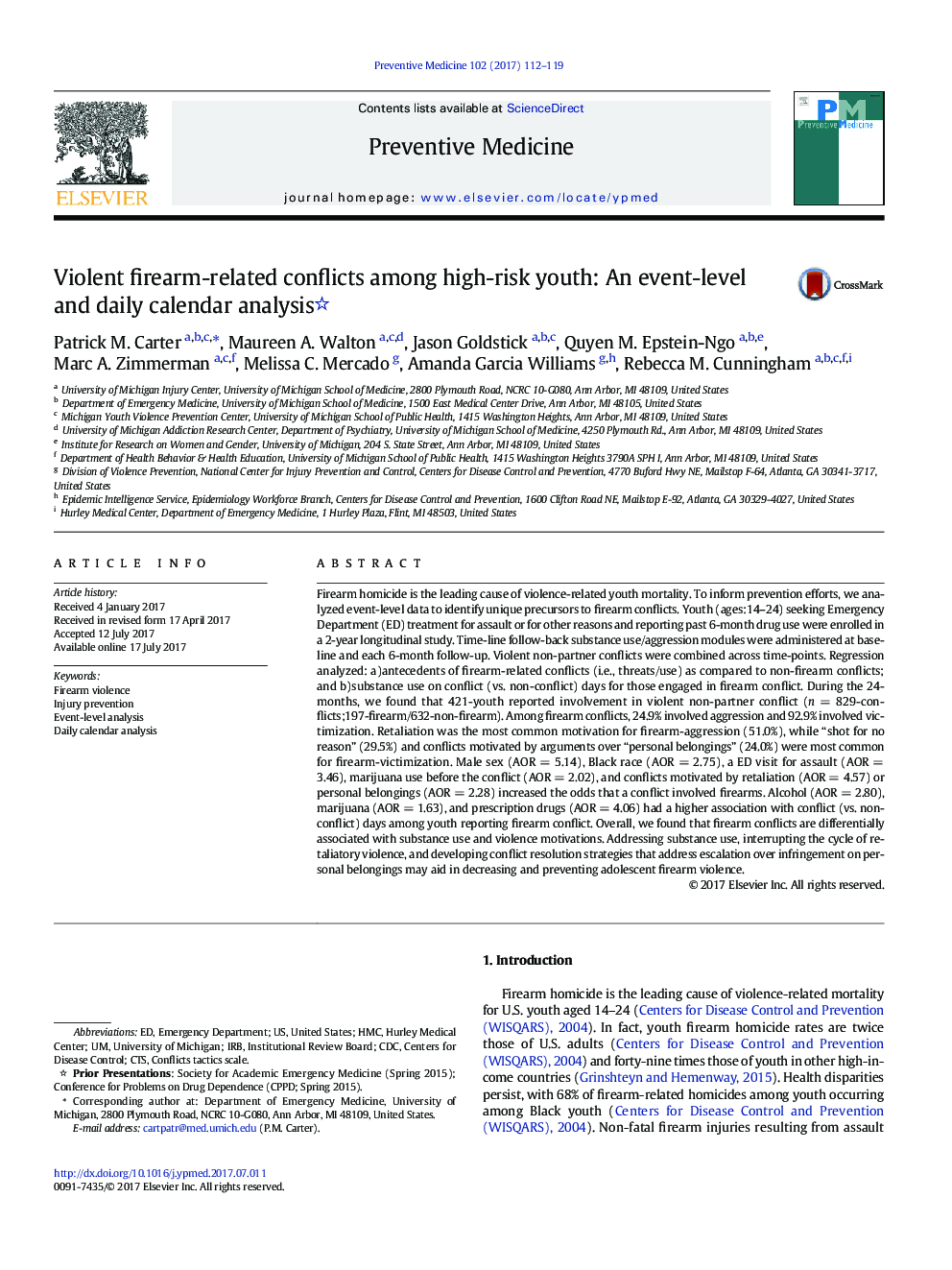| کد مقاله | کد نشریه | سال انتشار | مقاله انگلیسی | نسخه تمام متن |
|---|---|---|---|---|
| 5635576 | 1581612 | 2017 | 8 صفحه PDF | دانلود رایگان |
- Among a sample of drug-using youth, ~Â 25% of violent conflicts involved a firearm.
- 42% of the sample reported substance use prior to a violent conflict.
- Marijuana, but not alcohol use, was uniquely associated with firearm conflicts.
- Firearm conflict was motivated by retaliation & arguments over personal belongings.
- Alcohol, marijuana, & prescription drugs were associated with firearm conflict days.
Firearm homicide is the leading cause of violence-related youth mortality. To inform prevention efforts, we analyzed event-level data to identify unique precursors to firearm conflicts. Youth (ages:14-24) seeking Emergency Department (ED) treatment for assault or for other reasons and reporting past 6-month drug use were enrolled in a 2-year longitudinal study. Time-line follow-back substance use/aggression modules were administered at baseline and each 6-month follow-up. Violent non-partner conflicts were combined across time-points. Regression analyzed: a)antecedents of firearm-related conflicts (i.e., threats/use) as compared to non-firearm conflicts; and b)substance use on conflict (vs. non-conflict) days for those engaged in firearm conflict. During the 24-months, we found that 421-youth reported involvement in violent non-partner conflict (n = 829-conflicts;197-firearm/632-non-firearm). Among firearm conflicts, 24.9% involved aggression and 92.9% involved victimization. Retaliation was the most common motivation for firearm-aggression (51.0%), while “shot for no reason” (29.5%) and conflicts motivated by arguments over “personal belongings” (24.0%) were most common for firearm-victimization. Male sex (AOR = 5.14), Black race (AOR = 2.75), a ED visit for assault (AOR = 3.46), marijuana use before the conflict (AOR = 2.02), and conflicts motivated by retaliation (AOR = 4.57) or personal belongings (AOR = 2.28) increased the odds that a conflict involved firearms. Alcohol (AOR = 2.80), marijuana (AOR = 1.63), and prescription drugs (AOR = 4.06) had a higher association with conflict (vs. non-conflict) days among youth reporting firearm conflict. Overall, we found that firearm conflicts are differentially associated with substance use and violence motivations. Addressing substance use, interrupting the cycle of retaliatory violence, and developing conflict resolution strategies that address escalation over infringement on personal belongings may aid in decreasing and preventing adolescent firearm violence.
Journal: Preventive Medicine - Volume 102, September 2017, Pages 112-119
